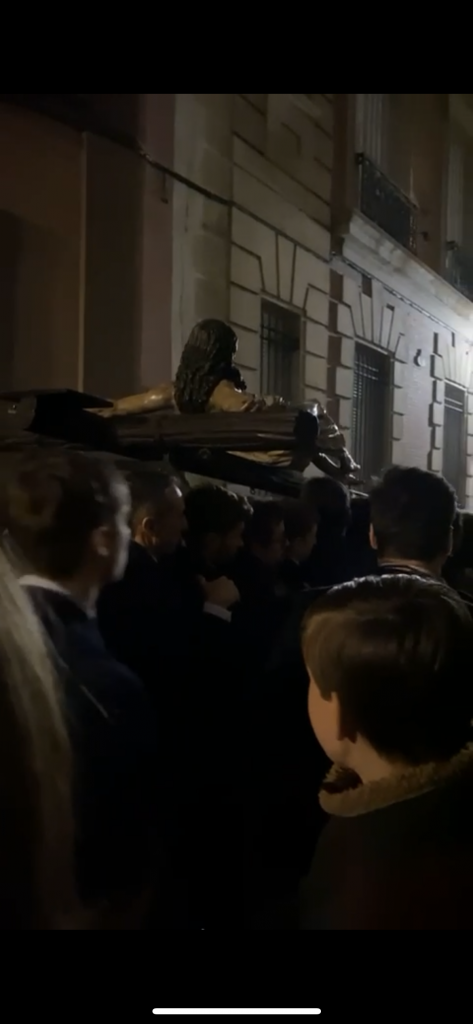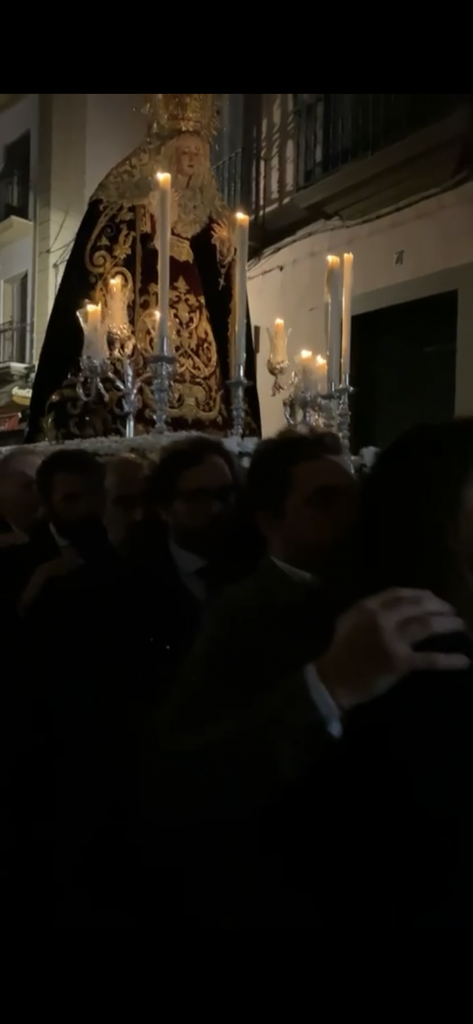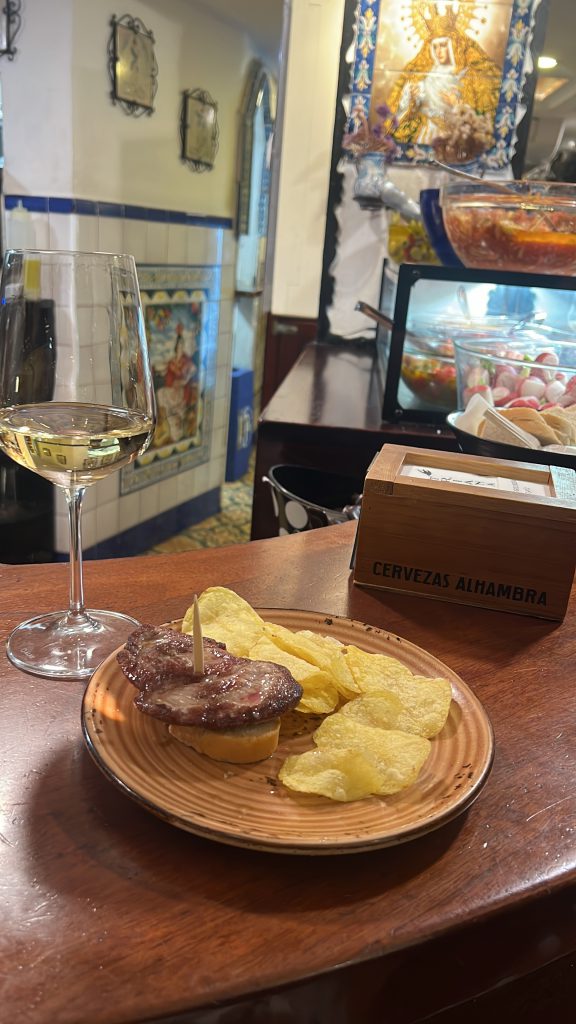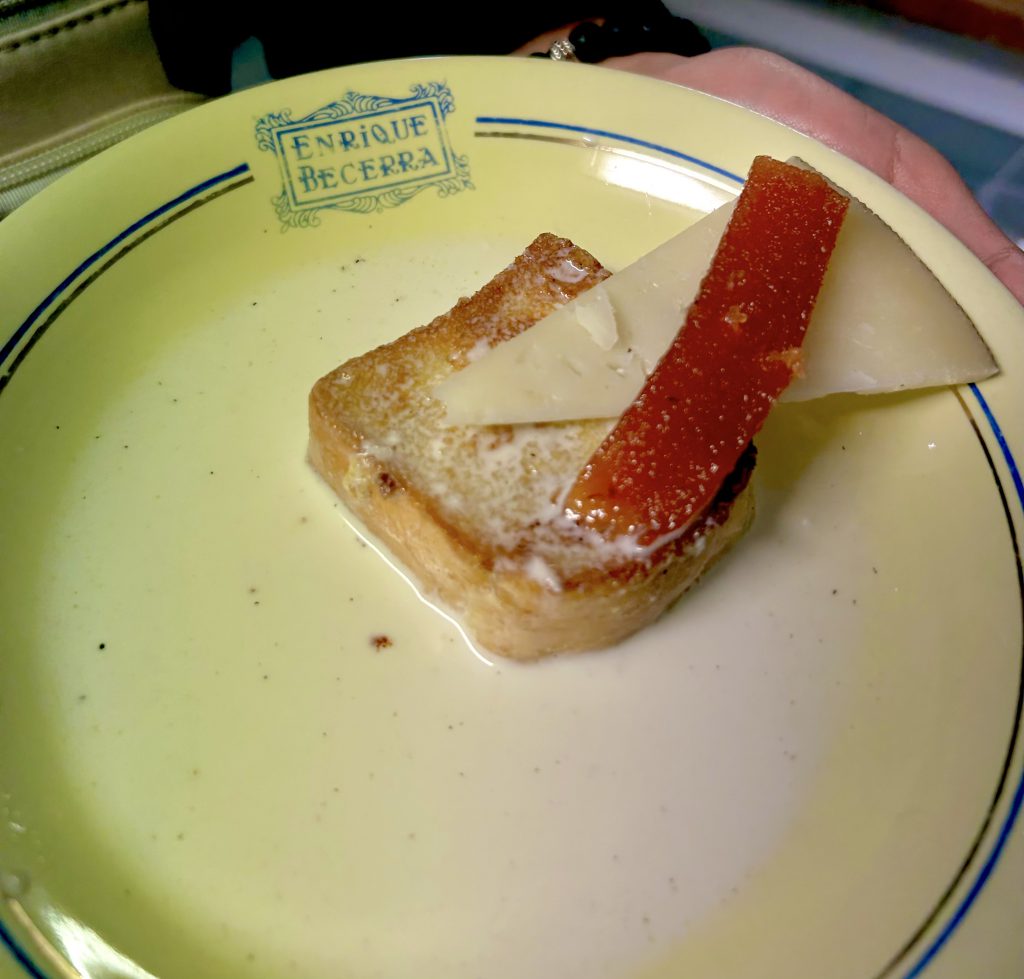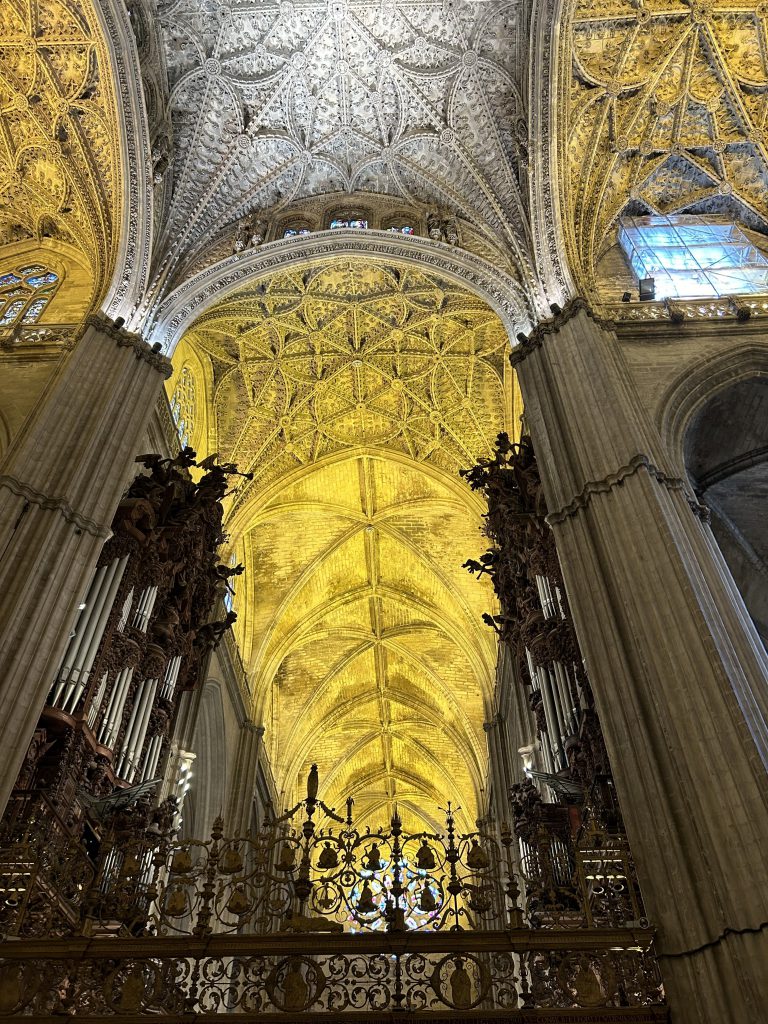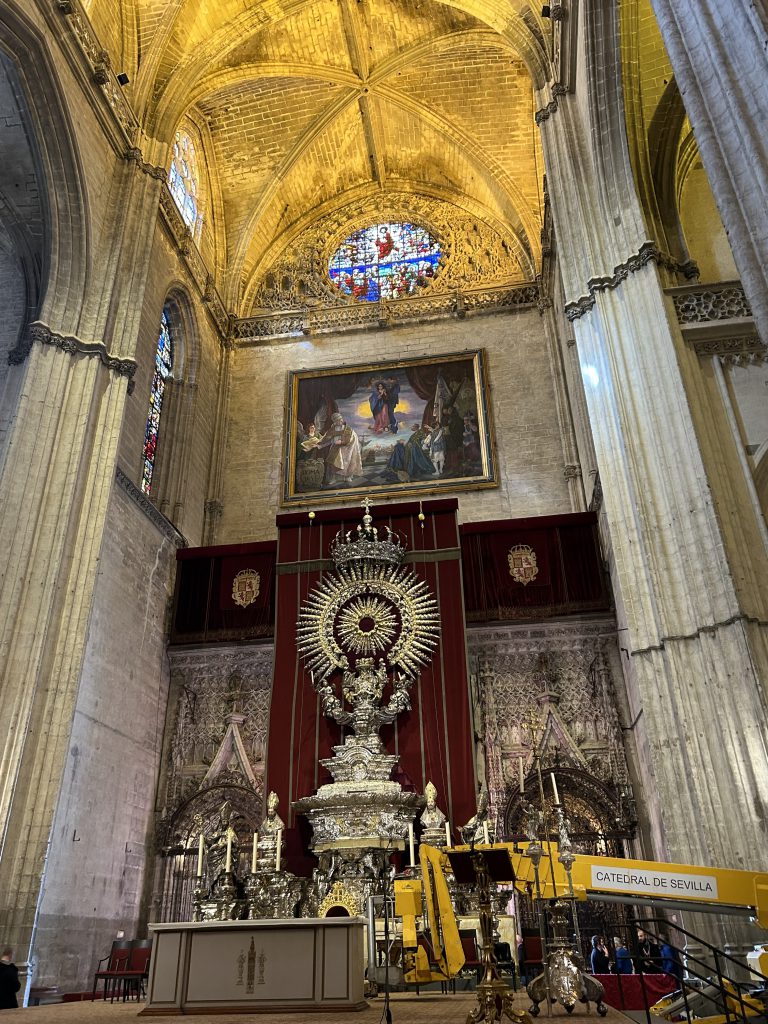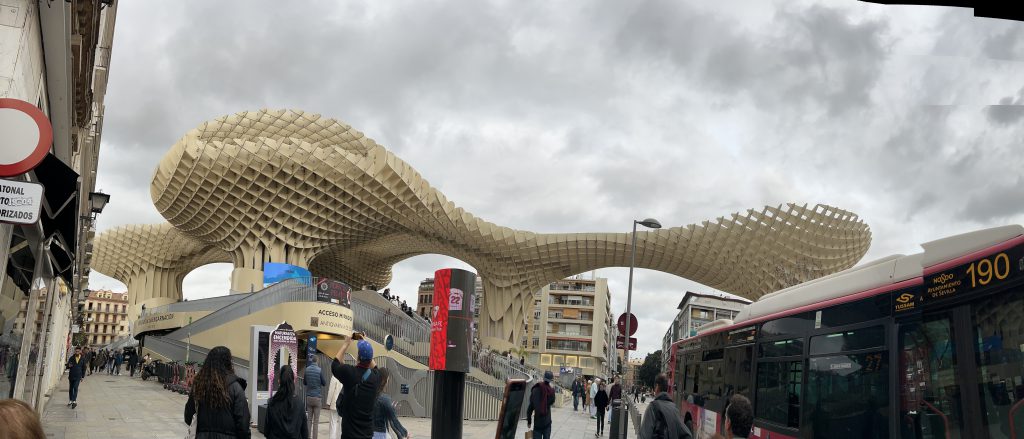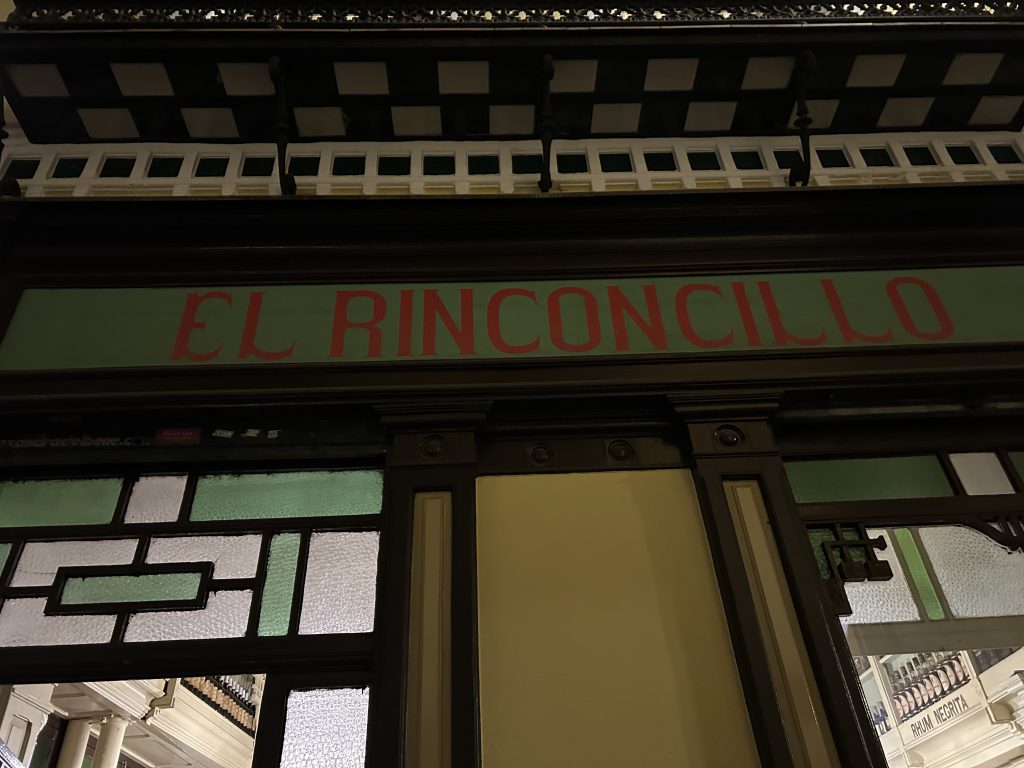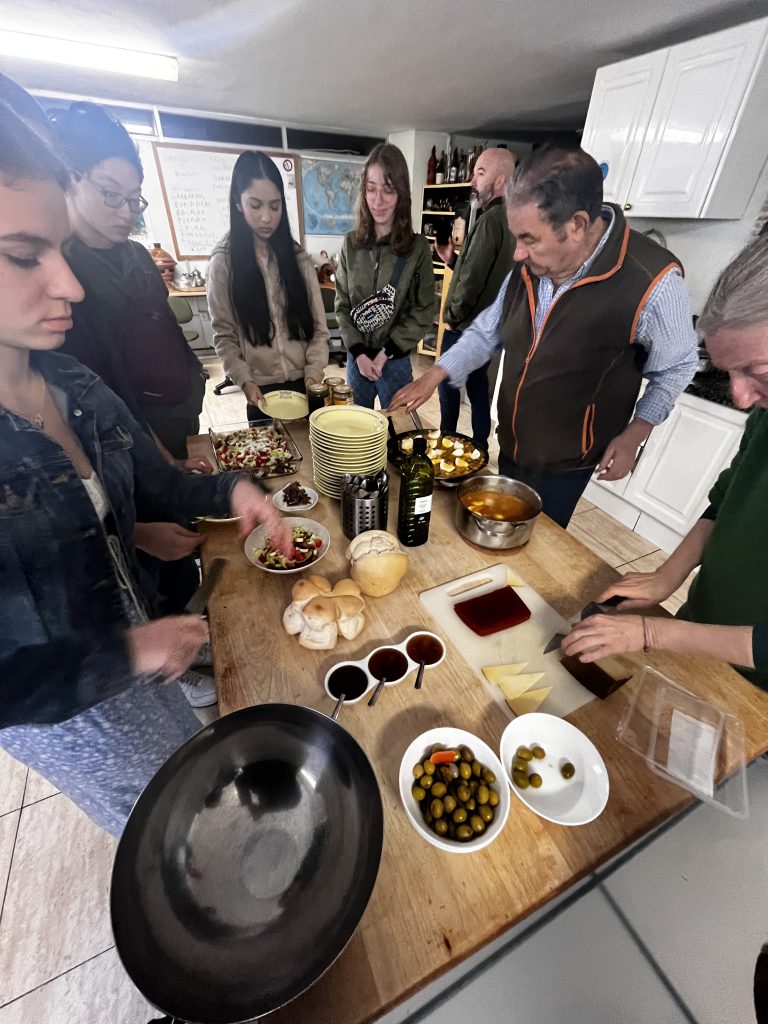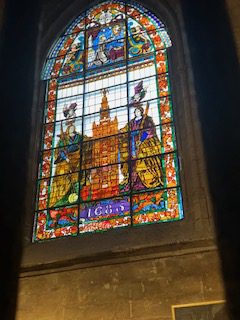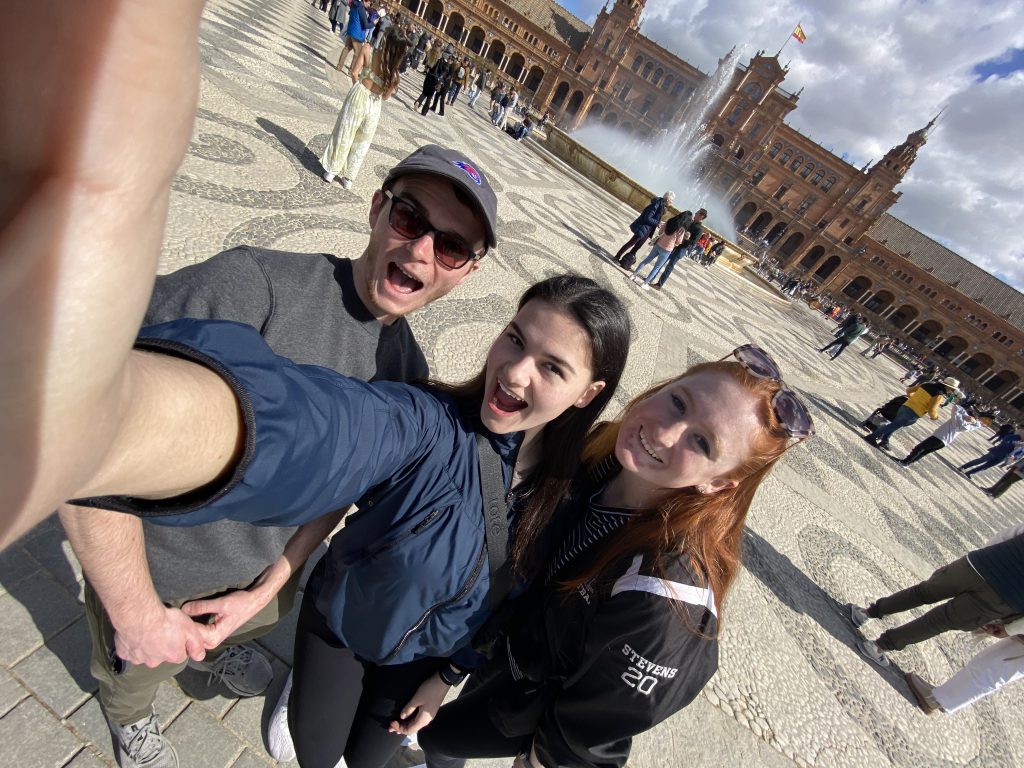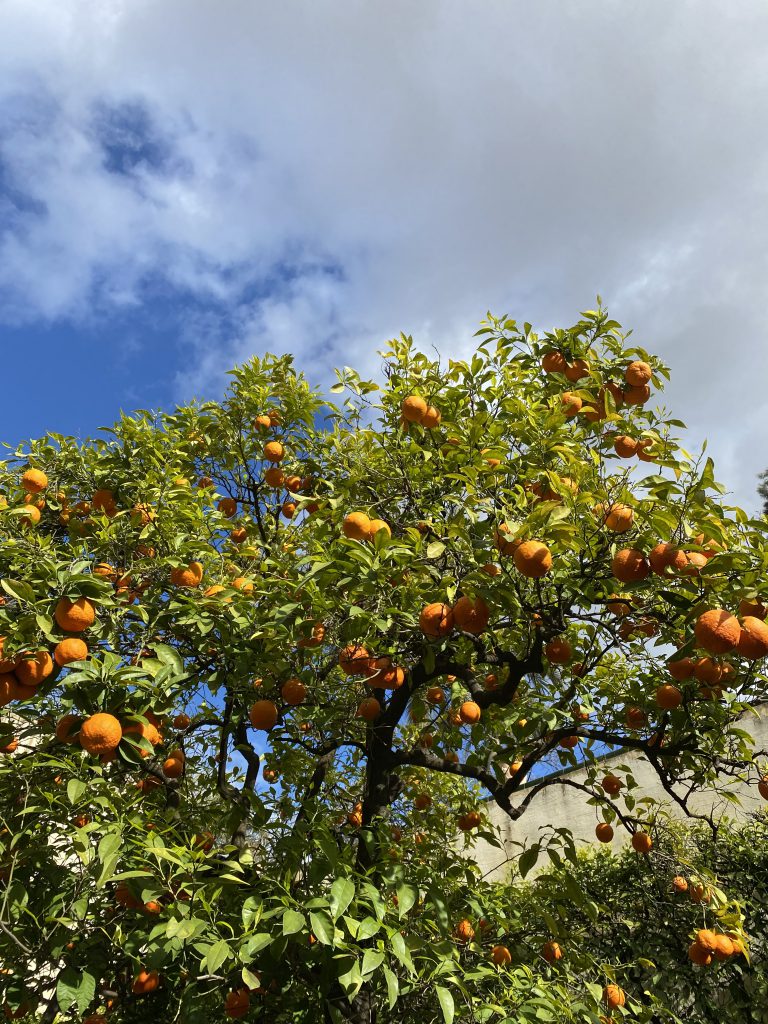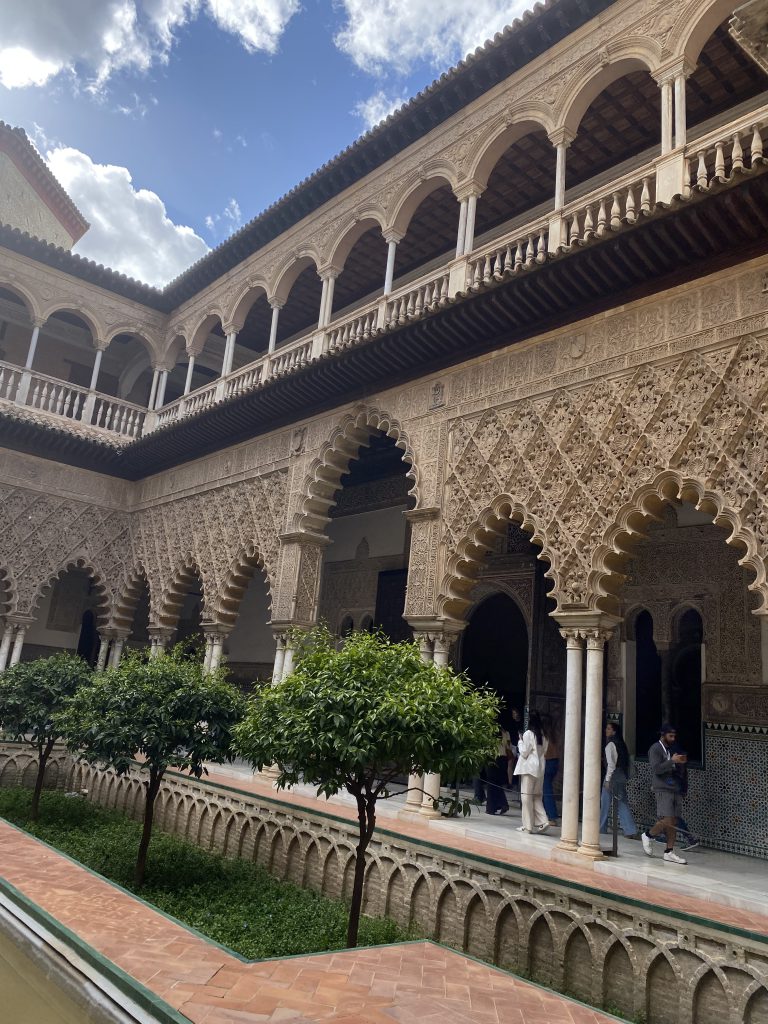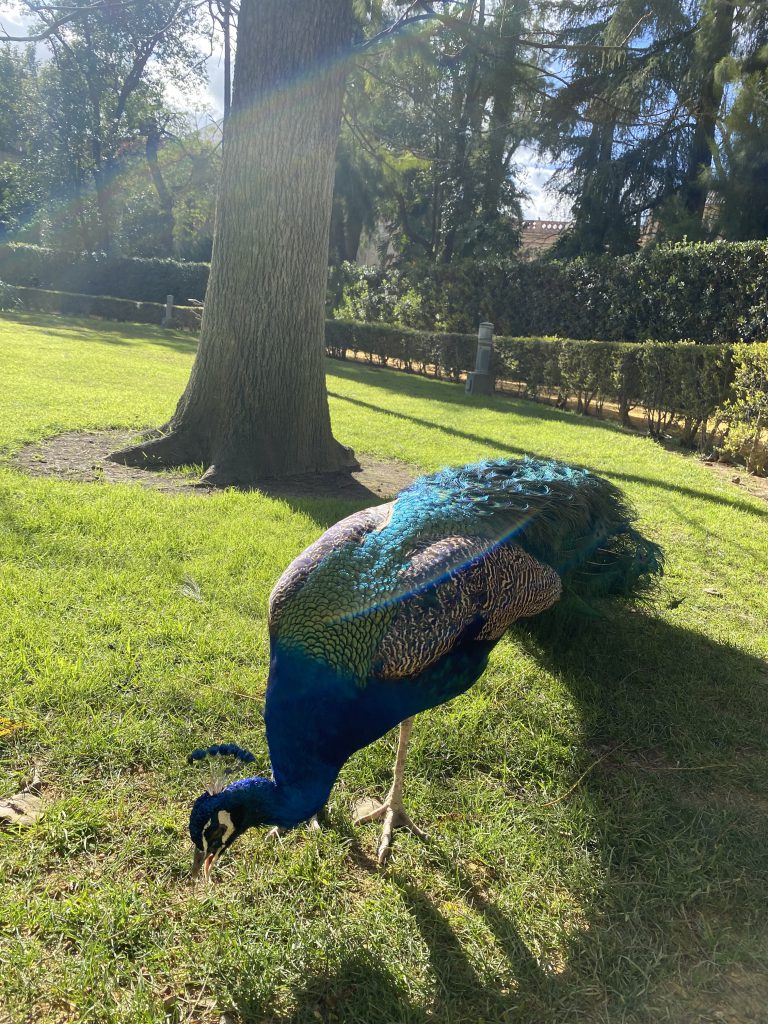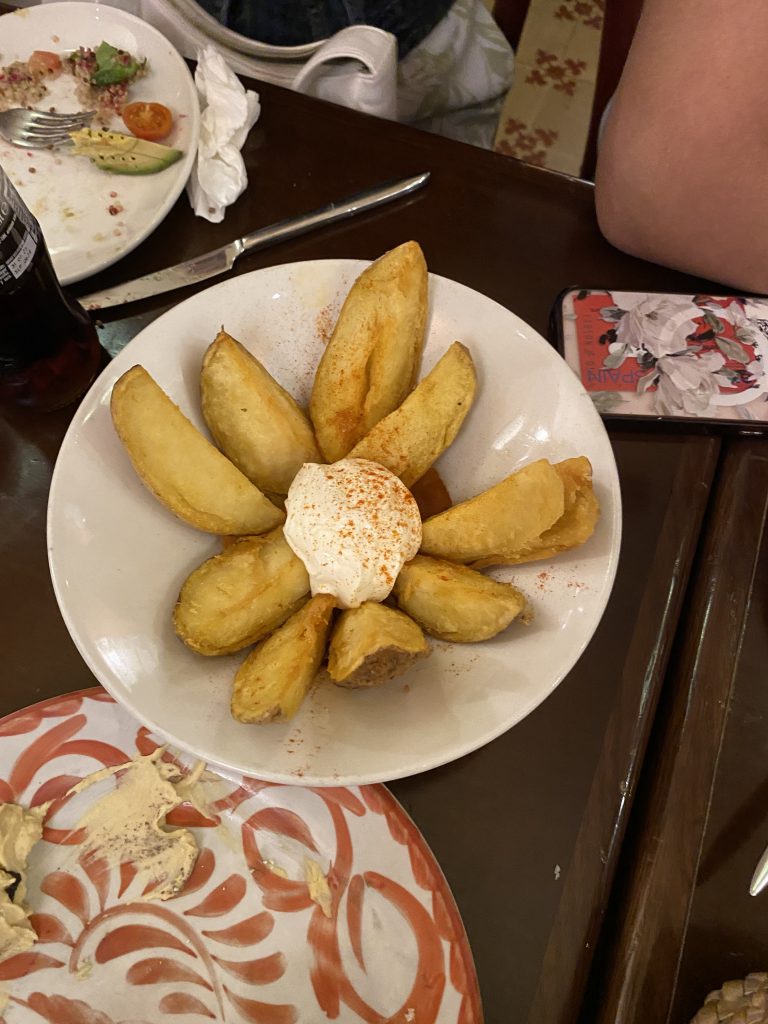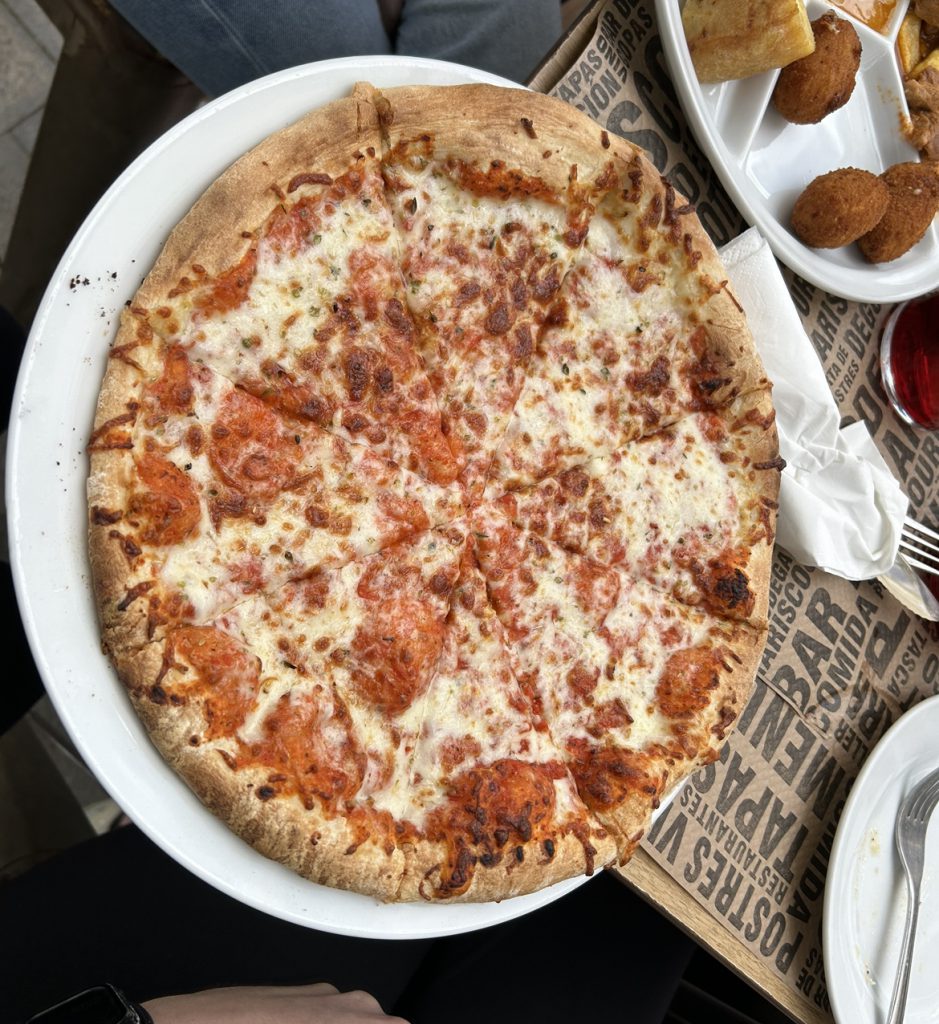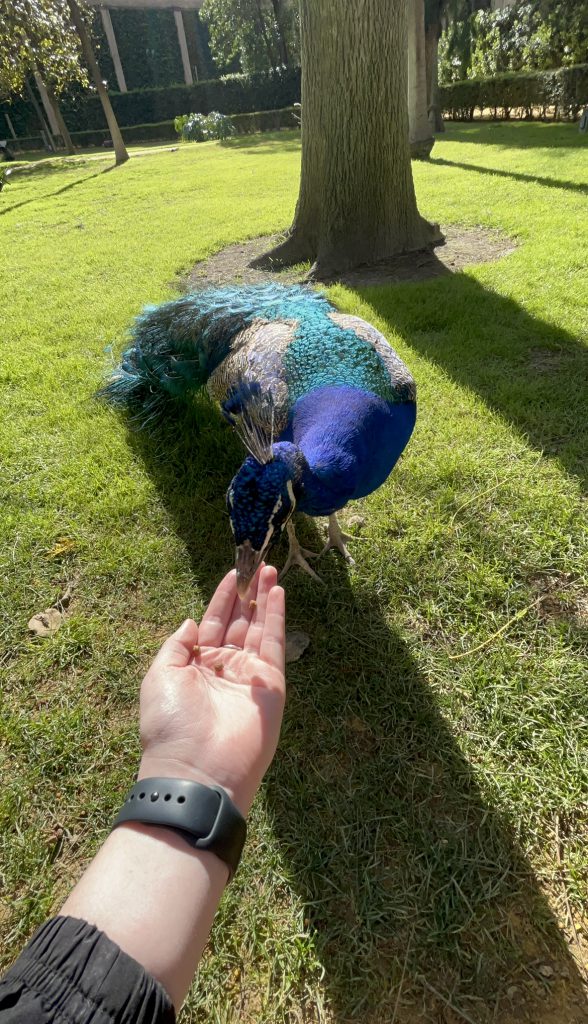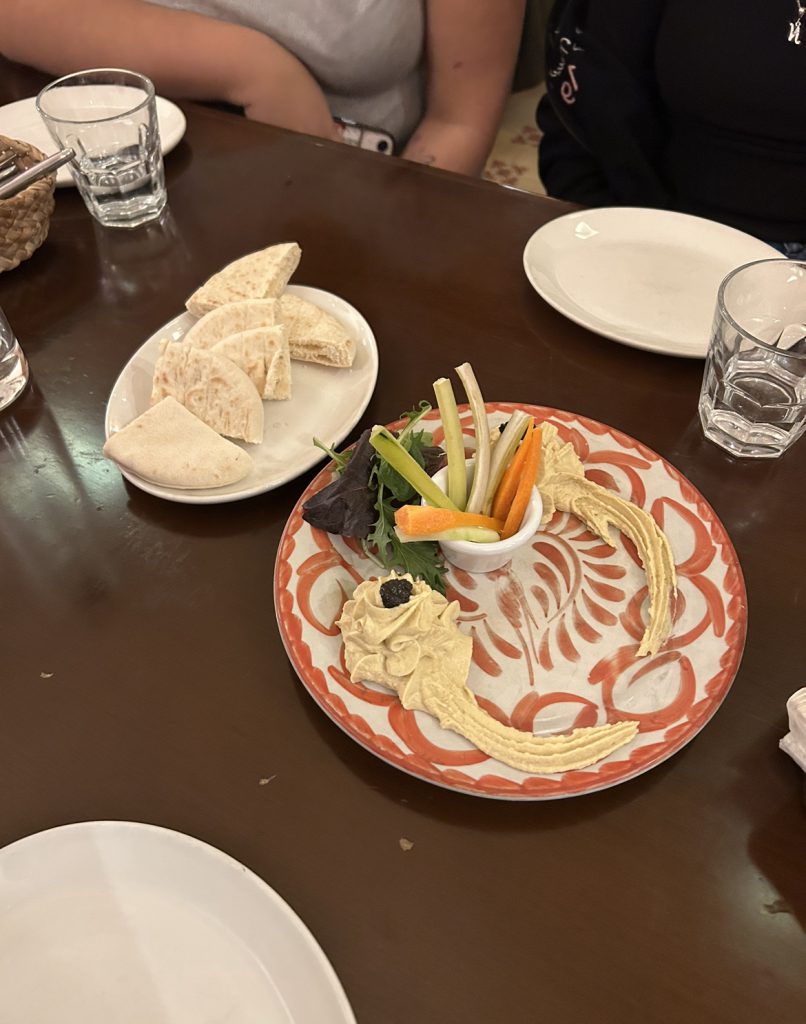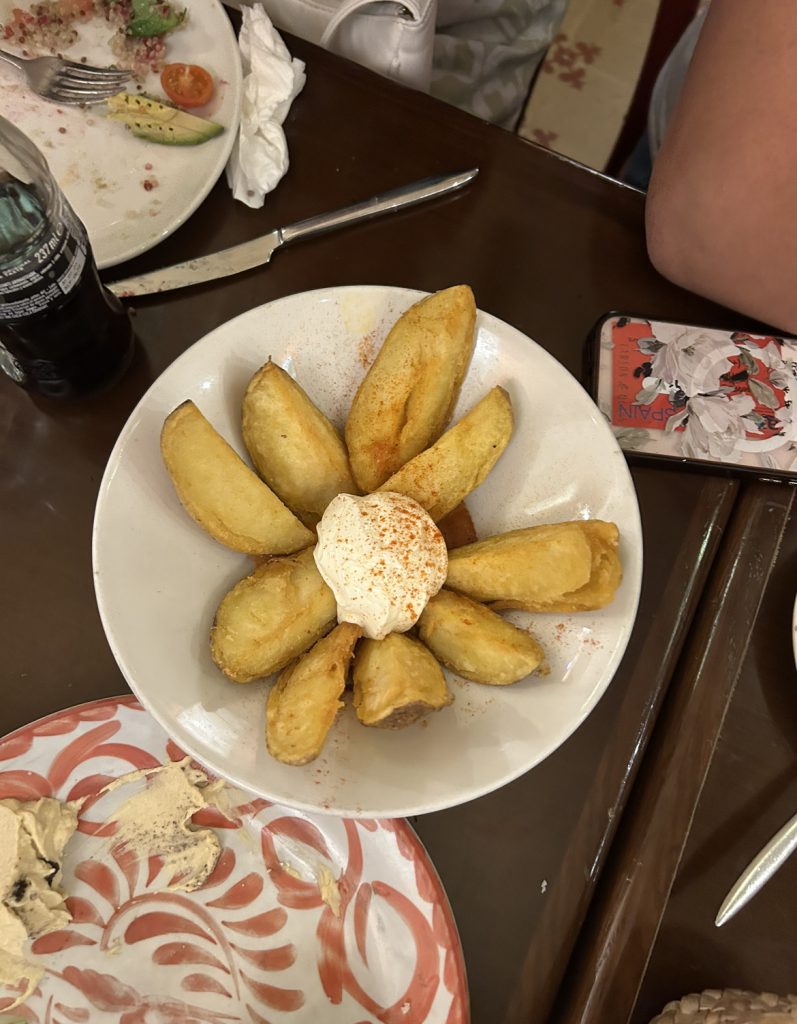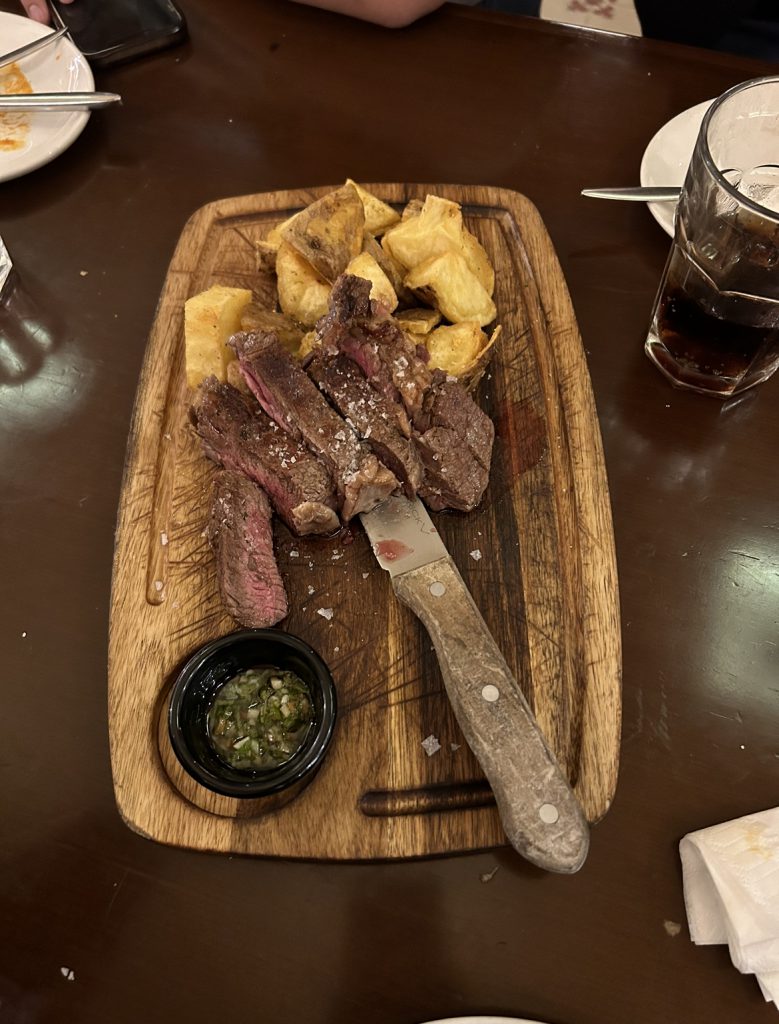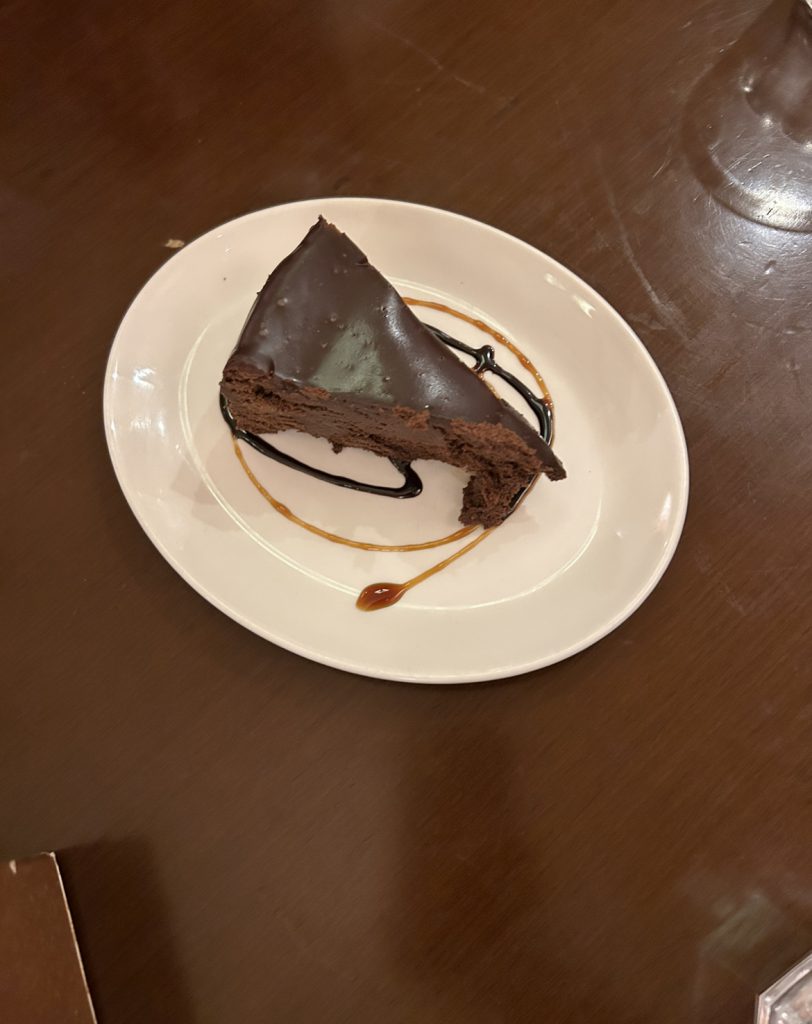I have been absolutely loving my time here in Seville. The city is so beautiful and there is always something to do. Today my peers and I got the opportunity to learn about the Moorish influence in Seville, through a lecture taught to us at the stunning University of Seville.
The lecture we witnessed delved deep into one of the most captivating chapters of Seville’s past – the Moorish influence. As we sat in awe, our minds were transported to an era where the vibrant Moorish civilization flourished in this very city, leaving behind architectural marvels, intricate art, and a legacy that continues to shape Seville’s character to this day. From the awe-inspiring Alcázar to the majestic Giralda tower, Moorish heritage is displayed on every corner of Seville. It was a privilege to dive into the depths of Seville’s past, and it left us with a profound appreciation for the rich culture that defines this enchanting city.
After the enlightening lecture, I embarked on a voyage through the city’s bustling streets. As I zipped down the charming alleyways on my newly rented electric scooter, I stumbled upon a plethora of clothing stores that were screaming to be explored. Seville’s fashion scene is a vibrant tapestry of styles, ranging from traditional Spanish attire to modern designs. What was meant to be a leisurely shopping excursion turned into a whirlwind of temptation, as I was surrounded by too many good pieces to choose from. Inevitably, I ended up indulging in more than I had planned. The clothes were too good to leave on the racks. Despite the slight dent in my wallet, the experience was undeniably worth it, as I walked away with clothing that will remind me of the lovely city of Seville.
Reuniting with my classmates after my shopping run, we set off on a captivating tour of Seville’s Arenal neighborhood. This vibrant neighborhood offers a glimpse into Seville’s dynamic culture and storied past. Our journey through Arenal culminated in a visit to the iconic Plaza de Toros, the home of Spanish bullfighting. Stepping into this historic arena, I was immediately struck by the weight of its cultural significance. While bullfighting remains a controversial tradition, deeply rooted in Spanish culture, it was impossible to deny the artistry and ritualistic nature of the spectacle. As we listened to our guide recount the history and intricacies of bullfighting, I couldn’t help but marvel at the passion and tradition that surrounded this age-old practice, even as I grappled with its ethical complexities. Our tour of the Plaza de Toros provided a great insight into an integral aspect of Spanish heritage.

After bidding farewell to my classmates, I embarked on a solo adventure, seeking out an attractive eatery in the charming streets of Seville. There, I indulged in a delicious burger crafted from “Carne de Ternera,” which translates to veal in English. This tender meat, sourced from young cattle, boasted a rich and savory flavor that left me utterly delighted. Accompanying the burger were a generous serving of crisp French fries, a hallmark of Seville’s culinary scene. There’s something truly special about Sevillian fries – perhaps it’s the locally sourced potatoes, or the meticulous attention to frying them to golden perfection. Whatever the secret may be, each bite was a symphony of crunch and flavor, elevating my dining experience to new heights. To cap off my lunch, I indulged in a heavenly slice of carrot cake. Every bite felt like heaven, a testament to Seville’s culinary prowess and ability to delight the senses at every turn.
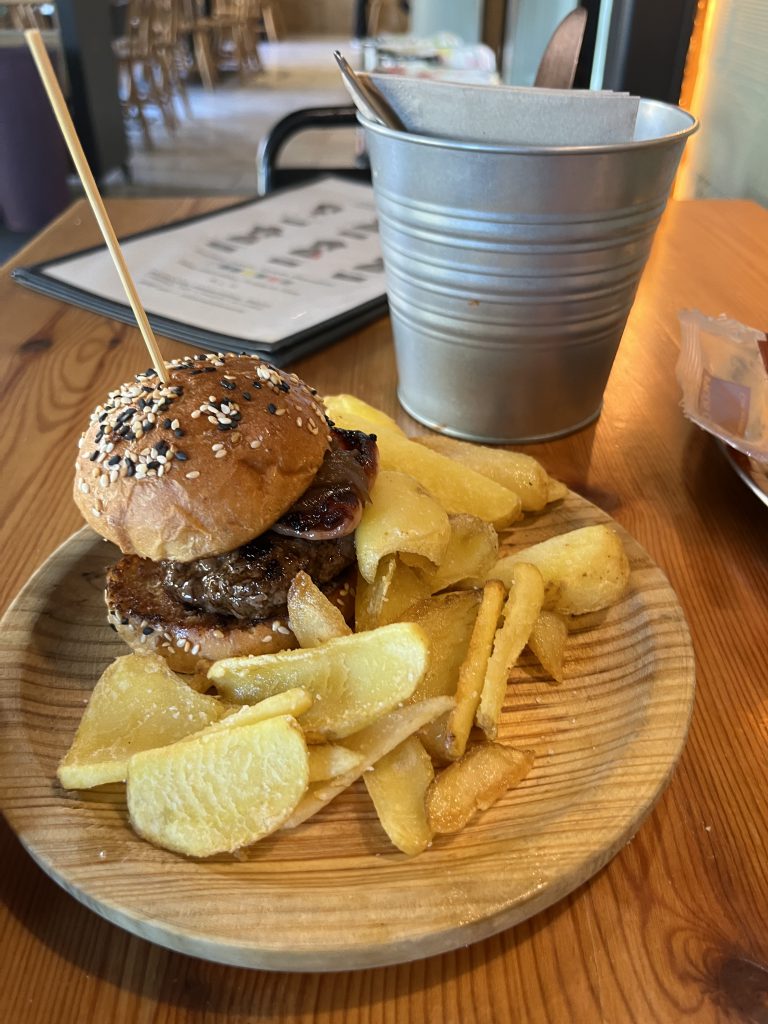
After savoring every last bite, I dove into a different experience by attending a Brazilian Jiu Jitsu class at Gracie Barra Sevilla. As a practitioner of this martial art back home, I was curious to see how they did things in Spain. Stepping onto the mats, I was welcomed with open arms by the friendly instructor and fellow practitioners. The class was nothing short of exhilarating, with each technique executed with precision and passion. What truly stood out, however, was the sense of community that spread across the mats. Despite being in a foreign country, I felt right at home, bonded by our shared love for Jiu Jitsu. The experience was a testament to the universality of martial arts and the camaraderie of Jiu Jitsu.

Since I worked up an appetite on the mats, I ventured out once again exploring Seville’s culinary delights. This time, I found myself drawn to a taco joint, lured in by the promise of authentic flavors. The tacos were nothing short of phenomenal, bursting with fresh ingredients and bold flavors that danced on my taste buds. What’s more, the affordability of the meal was a pleasant surprise, reaffirming Seville’s reputation as a city where one can indulge in exquisite meals without breaking the bank. At the end of my meal, I retired for the night, with dreams of tacos and the vibrant streets of Seville swirling in my mind.


